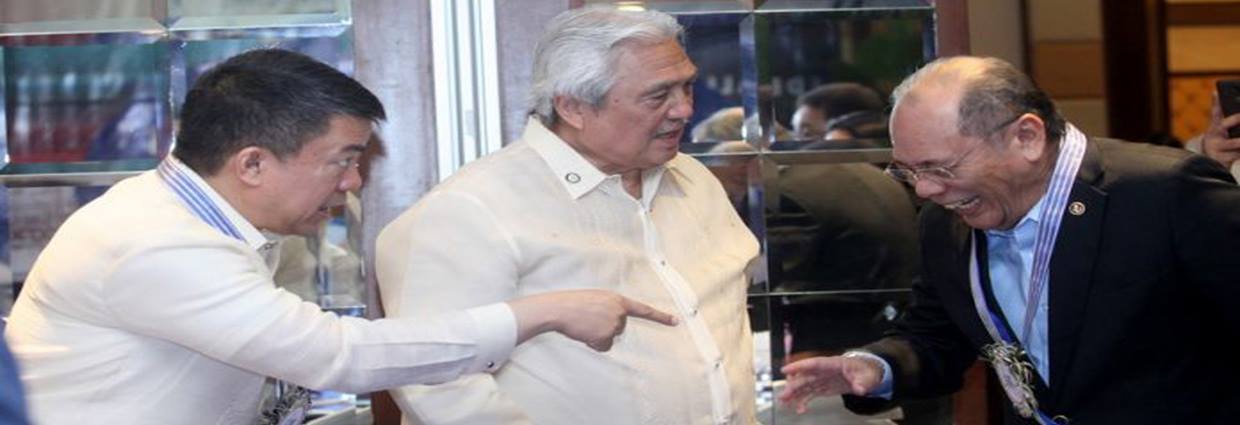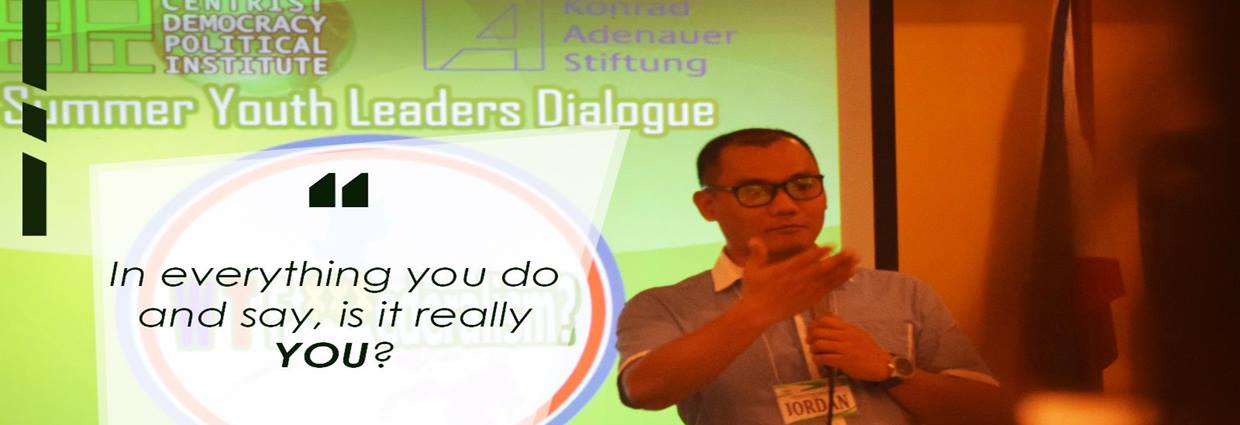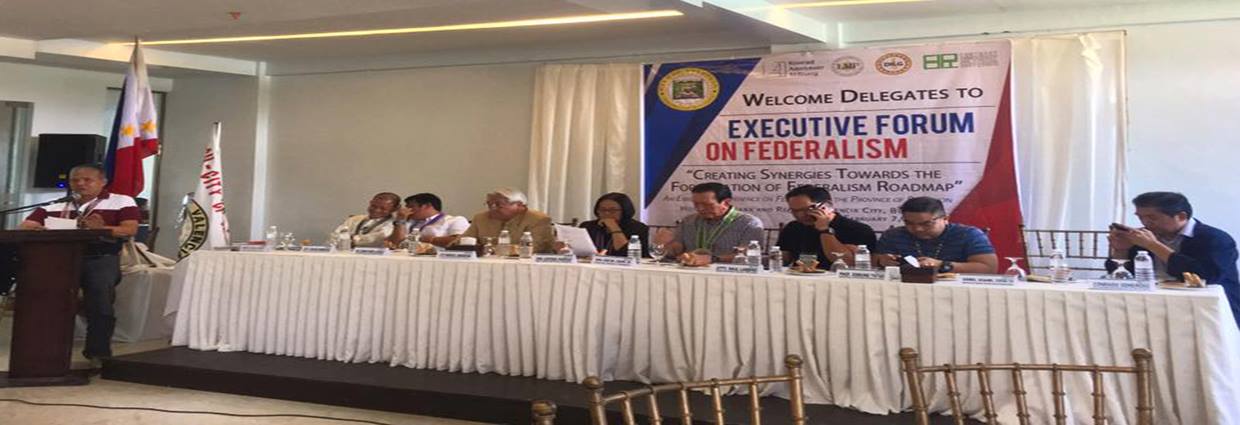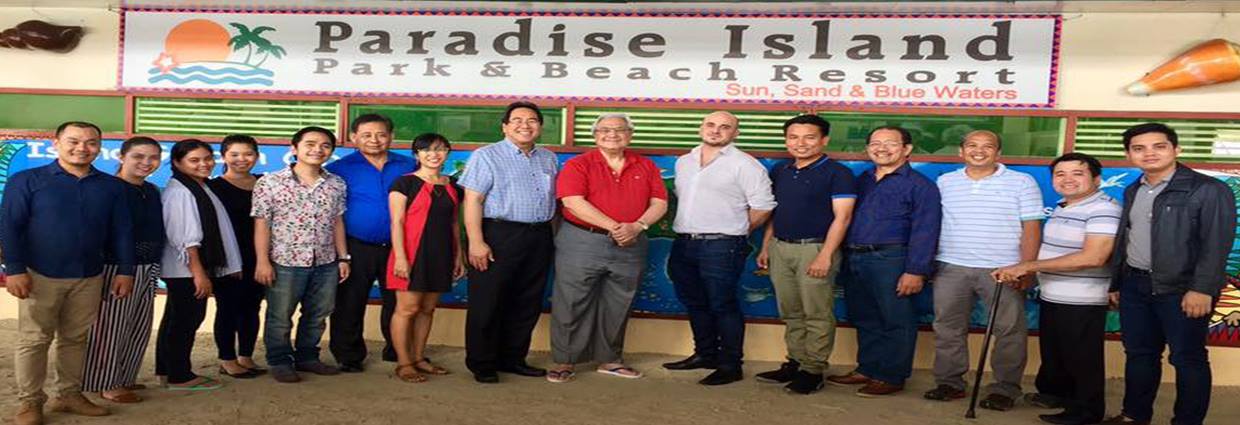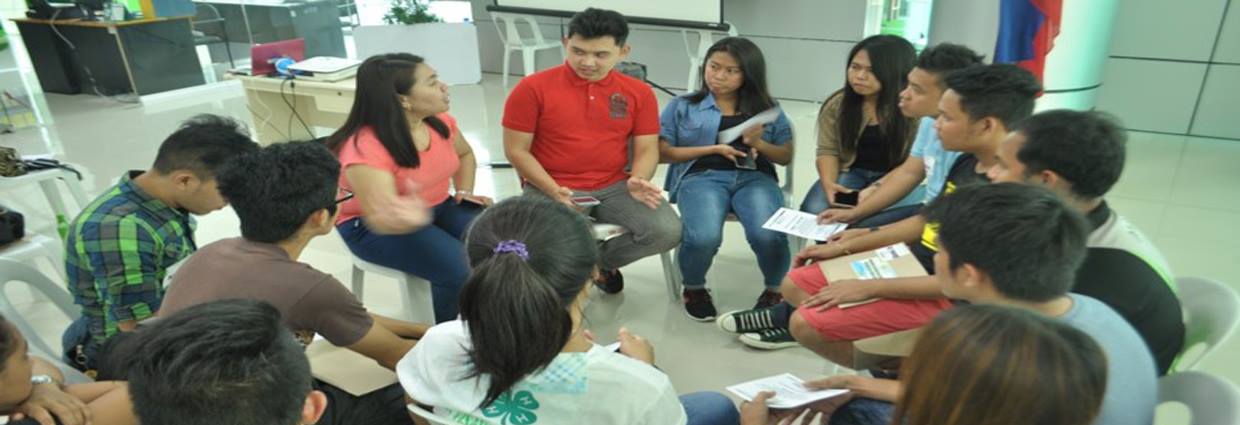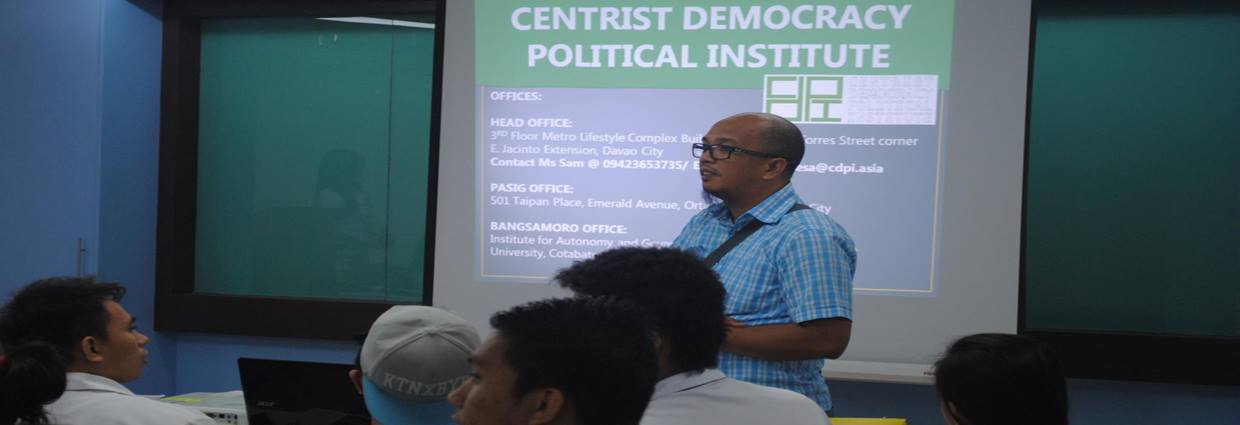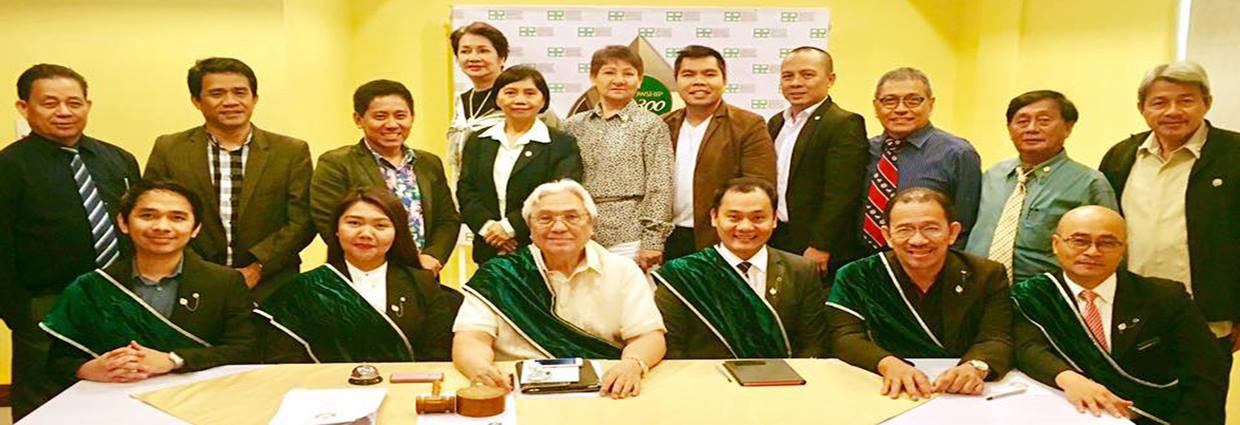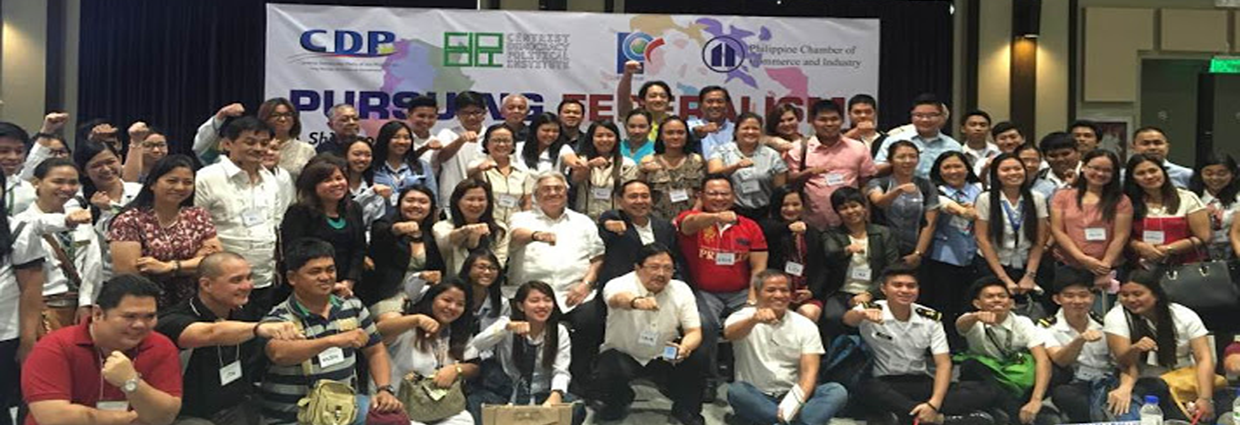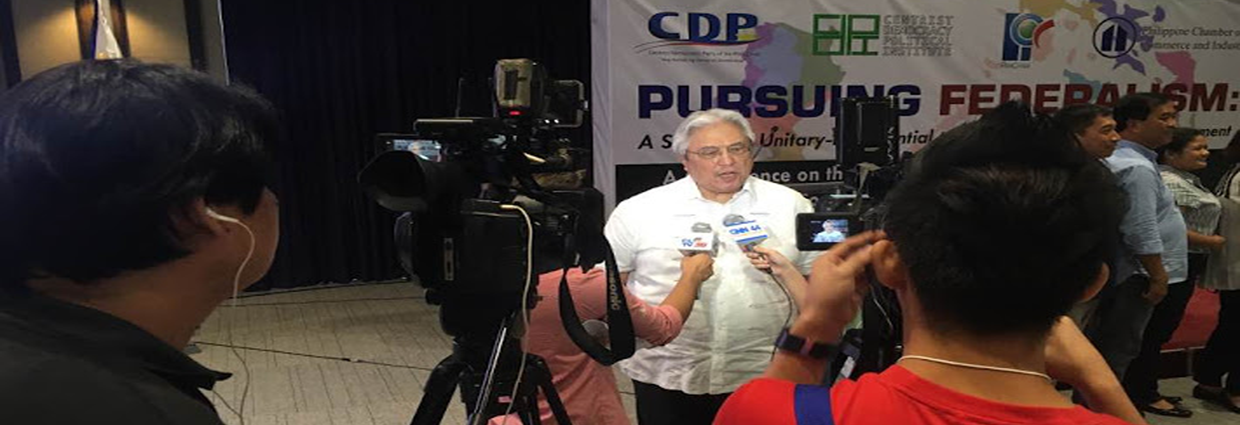Our action plan vs coronavirus is helter-skelter and unfocused
According to sketchy details outlined in a story posted by GMA TV news, Defense Secretary Delfin Lorenzana disclosed that the second phase of the National Action Plan to curb Covid-19 is already being crafted, and it will be presented soon to the Inter-Agency Task Force for the Management of Emerging Infectious Diseases (IATF-EID).
Before throwing in our questions, let us give full vent to the details revealed by the good secretary’s announcement.
Lorenzana said the next phase the National Action Plan will contain measures for easing the lockdown to enable the economy to recover.
He said this would be the second plan to be put together. The first covered the three months from April to June, Lorenzana said.
“The objective [is] different from this month because we are now able to contain the virus and there’s a need to craft another campaign or action plan to ease the lockdown and to return the economy into a little bit normal, the lives of people into a little bit normal,” he added.
According to Lorenzana, the proposed second phase of the National Action Plan was to be presented to the inter-agency task force on Thursday.
He also said that despite criticisms from detractors, the first phase of the plan had been successful because it yielded good results.
Lorenzana is the chairman of the National Action Plan against Covid-19. The vice chairman is Interior Secretary Eduardo Año while the chief implementer is Secretary Carlito Galvez, also a retired military man.
There are too many things that are troubling and questionable about this story.
First, who created the National Action Plan group, and who appointed Lorenzana as the chairman?
Second, was the National Action Plan conceived by the often-mentioned National Task Force Covid 19 (NTF), whose existence is also shrouded in mystery? If so, what and who are the members of the NTF?
Third, how do these entities — the National Action Plan and National Task Force — relate to the IATF-EID? Do they take orders and direction from the main task force?
Fourth, why are the members of the National Action Plan solely military men? Where are the doctors and medical professionals who will be needed for the plan to work? For all their military credentials, Secretaries Lorenzana, Año and Galvez do not have the medical training and expertise to answer the threat of Covid-19. They know very little about the disease and its treatment.
Fifth, what would be the merit therefore of an action plan against Covid-19 that has been hatched and developed by former military men?
Sixth, is the military factor the reason why our response to Covid-19 has mainly featured draconian restrictions on the movement of citizens and our public life, and why there is so much talk of policing and punishment of rules violators?
Seventh, is the military element the reason why the IATF-EID finds it so hard to support the full opening up of the economy so the nation can at last move forward and rebuild?
It is fair to raise these questions because the progress of our struggle against the coronavirus has been marked more by setbacks than victories.
Not a day passes in which the Department of Health does not report a rise in the number of new infections (cases) and deaths, and no day comes in which some new barangays are not reported to have been infected and are then quickly locked down.
We are not winning the war against the virus because our collective effort is helter-skelter, disorganized and unfocused.
We can see how the splendid qualities of generalship can serve us well in this struggle, but these must be matched by the expertise and service of medical professionals, scientists, statesmen and economists, for the nation to triumph in this struggle.
Covid conceals DU30’s failings
Human dignity, our core value, is promoted by our adherence to a body of beliefs characterized by the four pillars of Centrist Democracy: social market economy; federalism and parliamentary government; the institutionalization of real political parties; all under the overarching ideals of democracy and the rule of law.
Corollary to the four pillars is our party platform encompassing the basic needs of the Filipino under the acronym of HEED: for health, employment, education and dwelling. These are the fundamental take-off from which poverty in the country is meant to be alleviated through the establishment of an efficient welfare state system.
An important lesson
If there is anything that is most glaring during this pandemic season, it is the deficiency in our public healthcare system, coupled with a near total absence of welfare mechanisms. Due to meager resources, we had to defeat the coronavirus by mimicking other countries’ defensive stance: quarantine and lockdown to contain the virus. While other countries combined these drastic moves with massive “testing, tracing and isolation” (TTI) of the infected, eventually “flattening their curves,” we fell short. In hindsight, we could have diverted funds to TTI initiatives in lieu of very long lockdown periods causing the near-collapse of our economy, instead of populist dole-outs and hairbrained initiatives like Balik Probinsya.
But this is all water under the bridge now. But the ramifications of what happened cuts to the core of our collective negligence. Our public healthcare system is primitive, to say the least. In 2017 (latest figures) World Bank data on Philippine per capita health care expenditure was $133, or just 4.45 percent of the gross domestic product, putting us on 102nd place out of 141 countries. Equivalent figures for Canada, $4,755; Denmark, $5,800; and Sweden, $5,904 make them the world’s top three countries in best health care. Along with Norway, the United Kingdom and Germany, these countries have excellent comprehensive welfare state systems which the Philippines should emulate, where social spending represents the largest individual item of public expenditure.
Welfare state derailed — promises, promises
The Deegong ran and won riding on three major promises, under his slogan “Pagbabago,” which were the linchpin of his administration. Initiate structural political reforms through the revision of the 1987 Constitution and a shift from the unitary system of government to federalism; the elimination of illegal drugs that is pushing the country toward a narcostate; and the eradication of corruption in all levels of government — tall orders, all.
By July 2018, the Consultative Committee formed to study the revision of the 1987 Constitution submitted its “Bayanihan Constitution” to Congress. For a time, the lower house went through a tableau of hearings before eventually sweeping the same to the legislative dustbin. To deliver the coup de grace the initiative for Charter revisions was then passed on to the Department of the Interior and Local Government (DILG) and placed under a minor functionary. It was then obvious that Duterte has washed his hands of and dropped the ball on federalism.
His second agenda netted him some minor drug lords but his tokhang methods produced no major drug kingpins. What we got instead were thousands of dead Filipinos and worldwide condemnation for human rights violations. And drugs still seep through.
Unraveling of the presidency
But perhaps the biggest deficit of this administration is on his third campaign promise to reduce corruption in government. And this was symbolized by what is now known as his Duterte Doctrine. He himself declared sublimely that he would not tolerate any corruption in his administration and he would dismiss from office any of his men (and women) who are tainted even by a “whiff of corruption”; and he is ready to sack any public officials even on a basis of false allegations of corruption.
In a series of bloodletting, he executed this doctrine with surgical precision. Two Cabinet secretaries, the DILG’s Mike Sueno and Tourism Secretary Wanda Teo got the axe for alleged anomalies. Then a charade of firings and dismissals ensued: Social Security System Commissioner Pompee la Viña, fired then transferred to the Department of Tourism as undersecretary; and Bureau of Customs chief Gen. Isidro Lapeña (Philippine Military Academy, ‘73), implicated in a smuggling case, “dismissed” and subsequently appointed as Technical Education and Skills Development Authority head.
In the Bureau of Customs, we have the tale of the “three stooges,” high officials implicated in the P6.4-billion shabu shipment scandal. The three were fired/resigned. It really didn’t matter as in a few months, they were reappointed to higher offices; Gerardo Gambala and Milo Maestrecampo as director in the Office of Transportation Security and ADG at the Civil Aviation Authority, respectively. The third man, Customs Commissioner Nick Faeldon, PRRD’s compadre was “fired” then assigned as Commissioner of the Bureau of Corrections — where the Good Conduct Time Allowance scandals erupted.
And recently, we have the case of Gen. Debold Sinas of the National Capital Region Police Office who flaunted his disdain for quarantine rules that he himself was mandated to enforce. He remained untouched. And now we have Health Secretary Francisco Duque 3rd, allegedly implicated in a corruption scandal at the Department of Health. Fourteen senators have called for his resignation. And the ludicrous defense of the President’s spokesman is “…Duque will not steal from government because [his] family [is] already affluent…”
And we have many, many more of these Duterte farces. These presidential acts reinforce the perception of the Duterte Doctrine of whiff of corruption to be a monumental hoax when close and loyal president’s men are involved.
Fighting the oligarchy
For a time, we were excited when he started a fight against the oligarchs. But he couldn’t quite finish it. His initial salvo at the ABS-CBN Corp. displaying his resolve, petered out.
ABS-CBN will get its franchise back. It has enough chips to cash in from all the congressmen and senators the Lopezes own. A franchise is for 25 years. The Deegong has only two years remaining and will soon be a lameduck president. Tradpols know how this is played out.
Balik Probinsiya
A failed Imelda program revived by the President’s subaltern was touted as a partial solution to the overpopulation of Metro Manila and the clearing of slums that are the breeding grounds for coronavirus contagion — and crime. Expectations were high and thousands applied, but the program was quietly withdrawn as the local government units that will receive the brunt of the exodus never did buy into the half-thought idea. Professor Ronald Mendoza, a noted political scientist has this to say: “These types of programs tend to be a waste of public-sector resources and merely become ‘ningas cogon’ — they eventually collapse due to the sheer size of the challenge and lack of significant impact.”
And meantime the coronavirus is here to stay, until when no one knows. We endured through the longest lockdown, yet infections are spiking, our people are dying, and the economy is collapsing. Many will come out of this — damaged but surviving. We need a President who can lead us, heal us — make us whole. Is Duterte up to it?
Even with Maria Ressa off base, cyberlibel ought to be repealed
If the public dismisses Ms. Ressa’s calls for sympathy, it may be because of the backdrop to her case, which was the impeachment of the late Supreme Court Chief Justice Renato Corona. His removal from office was a politically divisive issue, and many still believe that it was unjust. Many suspect that former President Benigno Aquino 3rd was behind the Corona impeachment, and that it had something to do with the controversial Hacienda Luisita, which the Aquino family owns.
Incidentally, the cyberlibel law that was cited to convict Ms. Ressa was passed during Mr. Aquino’s term. That detail, too, has been glossed over by some media, particularly the foreign press, which bought into Ms. Ressa’s attacks on the Duterte administration.
To be clear, this editorial is not a defense of the Duterte government. If any media outfit should feel threatened, The Manila Times might be one of them. The Times faces a dozen libel and cyberlibel cases; most of them were filed by the “Little President’’ himself, Executive Secretary Salvador Medialdea. But instead of crying press freedom, The Times has been quietly following the legal process to defend our rights.
Where The Times might find common ground with Ms. Ressa is in the absolute opposition to the cyberlibel law, Republic Act (RA) 10175. In general, cyberlibel seems superfluous as there is already an existing law against libel in the Philippine Criminal Code.
Established principle
Yes, free speech or freedom of the press is not absolute. That much is established in Philippine law, which protects and offers remedies against malice and defamation. The old libel law is tough and far-reaching since it covers everyone in the media organization, including the janitor and others who have no direct hand in a story that may be questioned in court.
The proponents of cyberlibel took issue against the global reach of the internet, which serves as a new platform of traditional media as well as individuals using blogs and social media. But most of those who supported cyberlibel were legislators and other authority figures. Media performs an adversarial function against them as part of its societal duty to check those in power and protect public interests. Notice the conflict of interest?
In our view, Ms. Ressa’s Rappler would have been subject to the libel law in the Criminal Code even if her news service operates entirely online. Rappler has all the trappings of traditional media, and its operations are nearly identical to any newspaper or news program on radio and television. In fact, Rappler would likely qualify as a newspaper as defined by the World Association of Newspapers, which recognizes online publications in the United States and elsewhere.
Because of Ms. Ressa’s conviction, there is now interest to limit cyberlibel’s statute of limitations. But if those in Congress are truly sincere about protecting press freedom, they should look beyond Rappler and propose to scuttle cyberlibel altogether.
Of course, repealing RA 10175 could not be retroactive. But the position argued here is not about any particular media outfit or present case. This is about making the law just and fair, particularly to those outside the halls of power.
And in the spirit of fairness and professional journalism, Ms. Ressa should come clean about the facts of her case before waving the banner of press freedom and democracy. She should at least acknowledge that Rappler’s factually incorrect reporting played into the hands of those who unseated a chief justice of the Philippines.
HIDING BEHIND SHRINE OF PRESS FREEDOM
SAFE DISTANCING FOR ANXIETY PREVENTION
“VACCINE RACE”
After 108 days: Time to end lockdown
IT is definitely time to end the lockdowns that started March15, modified in various ways, aimed at containing Covid-19. It will be the 108th day of the quarantine on June 30, and we’re setting some record on the longest such lockdowns.
The Wuhan lockdown, the first such measure to contain the pandemic, lasted only 79 days. European countries with much worse outbreaks — with total deaths more than 35,000 — have either totally lifted their quarantine or eased restrictions drastically.
In our case, deaths have totaled “only” 1,177. The richest and most developed nations on earth like the United States, the United Kingdom and Italy have had 122,610; 43,000; and 35,000, respectively. Our ranking in terms of number of cases has been the same since March, in the 39th-40th slot (No. 1 being the worst, the USA), going by Worldometers’ data.
While perhaps morbid, it is the statistics on number of deaths — and the nature of Covid-19 — which I think are important to determine whether we have contained the pandemic, enough to lift the quarantine that has frozen much of economic activity and made Filipino’s lives miserable.
The course of Covid-19 has shown its two major features. First is that it is highly contagious, unlike its coronavirus cousins like the severe acute respiratory syndrome (SARS) and Middle East respiratory syndrome (MERS) and even the common cold. Second, it is not as deadly as SARS (10 percent fatality rate) and MERS (34 percent), with a fatality rate for the Philippines of 3.9 percent, lower than that for the world of 5.2 percent.
While the caveat in those Covid-19 statistics is that it doesn’t take into account the extent of testing in a particular country, which may overestimate or underestimate the rate, it points to a reality that is both grim and not-so-grim.
Grim in that Covid-19 until a vaccine is found, is unlikely to be totally eradicated.
Not-so-grim in that, just as long as its rate of spread doesn’t overwhelm our hospitals, the number of deaths would still be manageable. The number of deaths won’t likely soar as to have TV images of mass graves, as in the case of Brazil, which after all practically did nothing to contain the pandemic.
In contrast we have, for 108 days, with 558,163 Filipinos so far tested, with a low 7 percent found free of the virus. With the 3.9 percent fatality rate mentioned, that would be a manageable 1,502 deaths.
Indeed, even with a vaccine against it, there are 60,000 Filipinos dying of pneumonia annually, compared to a likely 12,000 from Covid-19 this year.
While Covid-19 and pneumonia are totally different diseases, with different rates of transmission, their number of deaths somehow makes our choices clearer.
Would it be rational to impose a lockdown that severely damages the entire economy until everyone is vaccinated so we won’t have 60,000 Filipinos dying of pneumonia every year? I’m sure some economists can estimate that the poverty generated by, and the number Filipinos dying as a result of, a contraction (i.e., not just a slower GDP growth) of the economy, will be much more than 12,000.
Government had to impose the lockdown in March since, at the time, there was little data that could tell us how many Covid-19 cases and deaths could happen.
The statistics on Covid-19 deaths now themselves point to a containment of the pandemic.
Chart 1 Source: Department of Health
As shown in Chart 1, the peak of the pandemic’s deadliness was on April 1 when the 7-day moving average was 33 (Statisticians use the average for the past 7 days to give a better picture of the situation, rather than relying on figures just for one day.) This has significantly gone down to just the latest 1.14 deaths for the latest 7-day moving average on June 22. Per million Filipinos, the 7-day moving average of deaths is just 0.11, lower than the world average of 0.64, the US’ 1.85, Indonesia’s 0.17.
Chart 2
Although the daily announcements sound alarming, there is an unmistakable downward trend in cases, as shown in Chart 2. The peak of the pandemic’s spread here was on June 10, when the 7-day moving average was 571 cases per day. This has gone down to the June 20 average of 309 cases.
There are definitely hotspots though, where government should maintain quarantine, principally in Cebu City and the entire Cebu province as well as Quezon City.
But after 108 days of implementation, I’m sure the government can be more precise, more surgical, in imposing lockdowns, that is, aimed at particular areas where Covid-19 seems to be still rapidly spreading.
For instance in Cavite, the Covid-19 cases have been mainly in the large cities of Bacoor, Dasmariñas, Imus and General Trias. Furthermore, the cases in these cities are not distributed in their entire areas, but mostly in certain districts. In the municipality where I live, there have been no cases of Covid-19 in the past two months. There is no reason for our municipality to have some kind of lockdown.
Furthermore, the past 100 days or so have seen Filipinos practicing the things that epidemiologists have been repeating again and again, are the simple but effective ways of escaping and spreading the disease: the use of face masks, frequent handwashing, and social or physical distancing.
Anecdotal evidence though indicates that such practices are still not done by Filipinos in certain areas. Where I live and in Makati, you would see practically everyone in the streets and in supermarkets wearing face masks. Not so, I was told, in Parañaque and even Manila. Perhaps a simple municipal ordinance imposing fines for failure to wear masks in public places will go a long way in containing Covid-19 here.
Chart 3
Our hospital facilities have also been expanded so that these won’t be overwhelmed by a spike in cases we will have to endure when the lockdowns are lifted. Less than half of the different available facilities for Covid-19 patients are occupied, as shown in Chart 3.
What does the data really say on Covid-19 and ‘Black Lives Matter’?
We are likewise disconcerted by Duterte’s pronouncements that school opening would depend on a Covid-19 vaccine’s availability when, at best, the World Health Organization and the Centers for Disease Control and Prevention declared that the earliest the vaccine debuts would be late 2021. These are all confusing. We understand that Covid-19 sets its own timetable, but the government must be unequivocal where it is leading us and if the government indeed has a strategy to defeat the virus. Or are we all just coasting along, coping and hoping for the appearance of a vaccine as a deus ex machina. If this is the case, we are in deep trouble.
Fatal strategy — IATF
Lately contrarian voices are circulating on social media pointing out the fatal flaws of this fight against Covid-19 from the initial lockdown intentionally caused by a shady faction identified as the “four Trojan horses,” embedded within the Inter-Agency Task Force for the Management of Emerging Infectious Diseases (IATF-EID). These champions of multinational pharmaceuticals and health care groups are singularly fixated on vaccinations that could yield billions of gray money, in lieu of “…disease prevenion and control as the only appropriate technolog, which is affordable, sustainable, safe and empowering.” (Dr. Francisco Salcedo Cruz, former Department of Health consultant and Manila Times writer.) This could be a reprise of the Dengue epidemic mired in the Dengvaxia scandals in the recent past. And, again, we have the familiar dramatis personae of the same rogue’s gallery of pharmaceuticals — Sanofi, Pfizer Philippines, Doctor Pharmaceutical Inc. in cahoots with health maintenance organizations. It is hinted that the Deegong may not be fully aware of the extent of the countrywide Covid-19 devastation due to the purported Palace cordon sanitaire that sanitizes feedbacks to the presidency.
Changing profile of Covid-19
But we are not delving into the veracity of this conspiracy within the IATF-EID and their allies at the Office of the President — if indeed one exists. From empirical evidence since Covid-19 emerged in December 2019, we now have a better profile of this coronavirus.
Globally, Covid-19 has infected more than 8.75 million in 213 countries and claimed 462,519 souls (June 20). There are mixed results from different countries — some, able to “flatten their curves” and others right smack in the second wave. The two countries subject to this article, the Philippines and America, have some regions where the virus is spiking after the reopening of the economy; the Philippines with around 30,000 infections and 1,100 deaths, while America has 2.3 million and 121,000, respectively. But the per capita gives us a better perspective of this tragedy. America has 357 deaths per million population, while the Philippines’ is comparatively low at 10.
But what is interesting are two contrasting responses: while Duterte imposed another lockdown extension; US President Donald Trump continues to be in denial behaving as if the pandemic were fading, focusing instead on the reopening of the American economy; a sine qua non for his reelection this November. He needs to perpetuate his self-proclaimed reputation as the American Ppresident presiding over the “best economy, the likes of which the world has never seen before.” But a significant event threatens to derail his schemes. The brutal death of a black man at the hands of the police and Trump’s bungling of the initially peaceful protests fueled the embers of racism smoldering for centuries as the black man’s lot. What was once a fringe movement was given life by the death of George Floyd, catapulting “Black Lives Matter” into the mainstream and tearing at America’s soul. The country is now fighting two fronts — racism and the pandemic.
Data on the pandemic — macro level
Which brings us to the subtopic of this column. The interpretation of data used as an instrument for policy analysis and basis for political decisions. The sad truth staring the world at its face is that the data immutably confirms that Covid-19 has significantly lower contagion and morbidity rates compared to other pandemics; tuberculosis (TB), malaria, hepatitis, human immunodeficiency virus-acquired immunodeficiency syndrome and other vaccine-preventable diseases. For one, TB in 2017 caused an estimated 1.3 million deaths and 1.5 million in 2018. Viral hepatitis B and C killed 1.4 million annually; roughly 325 million are infected worldwide. Malaria infected 228 million with approximately 405,000 deaths in 2018, 416,000 in 2017 and 585,000 in 2010. Morbidity rates from these pandemics are far, far greater than Covid-19. Yet, we never did impose quarantines for these pandemics triggering the collapse of our economies over the years.
The world is absorbing $5.8 trillion to $8.8 trillion in economic losses equivalent to 6.4 to 9.7 percent of global gross domestic product, condemning the next generations to deprivation, poverty and general malaise from whence decades will pass before returning to “normal,” if ever. Covid-19 was an inconsequential infliction in contrast to what we bought ourselves into these past six months — mass hysteria-inducing irrational fear. And that, in the final analysis is what the global response was all about — the fear of fear itself — something America was introduced to by President Franklin Delano Roosevelt after the Pearl Harbor attack in 1941.
Data on US protests — micro level
In the wake of widespread protests, initially against police brutality, US rightist neo-Nazi groups allied with Trump came out with an obliquely different interpretation of statistics provided by the Federal Bureau of Investigation, presumably upon the direction of the US Department of Justice and the attorney general, and disseminated in a simple message no doubt to counter the raging protests. These disturbing facts were meant to disprove the racial character of the recent cop killings and denigrate the Black Lives Matter protests.
“Annually less than 400 people are killed by cops; 61 percent are white men; 32 percent are black males. Black males are 58 percent of those killed legally by private citizens in self-defense; except 75 percent of them are killed by other blacks. Black men overwhelmingly murder other black people; white people overwhelmingly murder other white people. Thus, this is not a racial issue; 90 percent of blacks that die of murder, die at the hands of other black people. Thus, the gruesome but simple message that white rightists want to convey to black America: Black lives don’t matter to ‘Black Lives Matter.’” (Milo Yiannopoulos, British far-right political commentator)
The two examples on interpretation of data simply emphasize that data by itself is neutral, but interpretation thereof is always seen through a prism of biases. But subsequent formulation of policies and decisions are fatal and dangerous if left solely to the dominant actors. In our case, the Deegong (President Duterte) and in America the Donald. The pandemic numbers are linear and immutable — infection cases-recovery-deaths. While those of Black Lives Matter are a composite of decades of prejudices injected into the numbers thus distorting the interpretation.
At the macro level, perhaps the world needs to pause, learn, internalize and reset. Meantime at the micro level, we all shape our “new normal,” wear our masks, observe physical distancing while exercising our right to protest, peacefully.
The graduating from quarantine Covid Class of 1960
This is hogwash! For one, the studies, research and statistics are not conclusive. In fact, differing studies can be cited. Placing the elderly in confinement lowers immunity, making them prone to depression and anxiety, possibly driving them to suicide.
This quarantine provided us the time to mull over the fragility of our lives amid the daily count of morbidity. Although in our engagement through social media, we never discussed this intimately. We left it unspoken, particularly when death couldn’t be closer as when one of us — Ting Valdez and his vivacious wife Cheng were both stricken. Cheng didn’t make it.
With the specter of mortality hanging over our heads, we coped, shunting aside the thought of who could be next. This heightens our longing to connect, using technology — and we did, employing the internet.
The ‘old normal’
For years, our class meets every Wednesday like clockwork upon the direction of our “president for life” Dinky Munda, doing the yeoman’s job of scheduling activities, acting as the eminence grise or overall “go-fer”; until Covid-19 interfered and confined us to our homes. But the craving to socialize was compelling, alleviated in part by our techie, Toti Morales, who set up the necessary communication routines. This technology-driven, face-to-face virtual encounters invariably end with oft-repeated anecdotes and jokes, nebulous yet strangely familiar. Sheepishly we groped and fumbled in the deep recesses of our memories, wiping off the cobwebs, peeling layer by layer the fading past — the curse of aging. Thus, the class’ self-appointed historian with a superb recall produced a written document inviting the rest to edit, contribute and help recollect and publish the same through social media. Pribu Balchand did a wonderful job recounting our colorful lives six decades ago, filtered naturally through the prism of a quintessential Jesuit novitiate, who could have been the first Hindu-Filipino Pope, had not his path to a holy life been derailed by two of the devil’s adjutants. Alvin Babista will pay for these transgressions as I am sure Titing Ancheta already did. Thus, Perbo’s opus in nine installments left us wonderfully and pleasantly guessing as to the narratives’ authenticity. But who cares, many of us have vanishing recollections anyway.
Thus, this quarantine provoked AdeD Class ‘60 to fashion out our new normal; and by our collected assessment fleshed out our role in the community and society — unfortunately, disparaged by a government bureaucracy ignorant of the seniors’ importance. While still ambulant, we have these magnificent few years still ahead of us which can still be put to good and productive use. And we intend to perform as we see fit as “men for others,” or as Romy Butiu put it succinctly — “Ad majorem Dei gloriam.”
Toward a ‘new normal’
Corollary to this is our disgust with senior government officials from whence the anti-senior policies and a host of other dysfunctional strategies emanate. But these are simply symptoms of an internal rot, where the bureaucracy is incapable of thinking things through.
Their pronouncements are long on rhetoric and short on facts and practicalities. The first few days of the general community quarantine witnessed hundreds of commuters stranded, either unable to go to their workplaces and/or back to their homes, for lack of transportation. A “balik-probinsya” young woman in fact died on the street waiting for a bus ride to Bicol, with four now orphaned minor children waiting for her at home. And hundreds of stranded passengers, some overseas Filipino workers, could be seen “lodging” for days on end under the airport overpasses waiting for flights back home. Countless horror stories abound that are unaddressed and totally unconscionable. These couldn’t be dismissed as mere faux pas.
Profile of Covid has changed
And thus, we arrive at a crossroad. It is indisputable that the Philippine economy must reopen lest we condemn our people to a worsening poverty and the future generation to a fate much worse than what Covid-19 can extract.
New studies by the WHO, Centers for Disease Control and Prevention and various international health institutions suggest that Covid-19 is losing potency and burning out — going the way of other pandemics like the severe acute respiratory syndrome, Middle East respiratory syndrome, Ebola, etc. In these studies, “…With or without lockdowns, coronavirus behaved similarly. On top of this, asymptomatic (no outward symptoms) transmissions are ‘very rare.’ Accordingly, the coronavirus no longer exists in Italy after running 35,000 deaths and statistically, global deaths are trending downward — the virus dying out in part due to its own viral mechanisms without need for vaccine or lockdown.” (The Manila Times, Yen Makabenta, June 11, 2020)
This is where our part as seniors becomes relevant. If the Covid-19 indeed is still potent and lurking about, then for heaven’s sake let’s instead protect and preserve the young — our country’s future. Let the seniors assume the risks. We have lived full lives. Septuagenarians only have a few more months or years. These are not heroics, simply pragmatics.
Primitive society
Human existence is filled with practices and oral traditions handed down from generation to generation on the relentless march of our species to populate the earth and survive. And the elderly play an incredibly special role as in life’s drama of aging, the eventual curtain call is death. Among the labrador eskimos old age was treated with great respect. “This does not prevent them, however, from putting the old folks out of the way when life becomes a burden to them. But the act is usually done in accordance with the wish of the persons concerned and is thought to be proof of devotion.”(Ernest William Hawkes, The Labrador Eskimo, 1916.)
Some apocryphal tales recount of Indians of the American plains. They have great respect for the aged. But during harsh winters when food is scarce, the elderly give theirs to the young and the able-bodied. And when they become a burden to the tribe, it is their custom that they are left behind to die. And this is a mark of respect.
We don’t propose for any of my classmates to do the same. This is simply to communicate to our leaders and policy makers unequivocally that the elderly are not brittle, helpless and useless. And scratch the surface, we too are as patriotic as any age group — and even better as we realize that with the ravages of the pandemic and the mounting morbidity around us, we have long accepted that death is the ultimate solution to aging. And it is our choice and privilege to do an exit in our own magnificent way.

